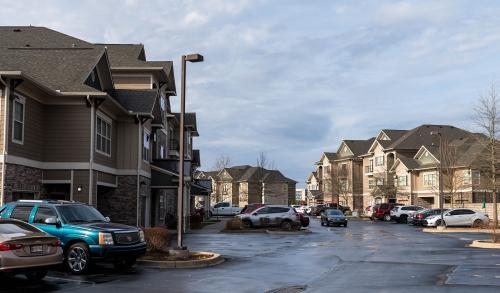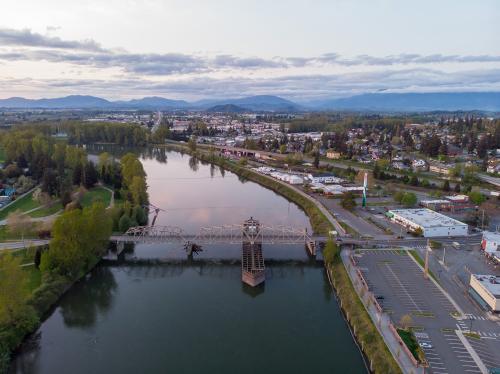The recently signed Infrastructure Investment and Jobs Act (IIJA) makes the largest federal investment into broadband expansion in the nation’s history. To accomplish the act’s broadband goals, Congress made states the key decisionmakers, with the National Telecommunications and Information Administration (NTIA) providing oversight.
This piece lays out nine actions every state should take in the development and implementation of its broadband plan to achieve Congress’ goal of universal connectivity.
Publicly establish a vision for using broadband to improve residents’ lives
As an initial action, states’ political leadership should publicly establish broad—but clearly measurable and time-defined—goals to guide the broadband expansion process and build support for the effort. This starts with framing the problem and the opportunity, as well as raising aspirations from incremental progress on a limited budget to transformative long-term outcomes from federal investment.
The vision should clarify that the goal is to not simply narrow the broadband network access gap, but close it permanently; to establish long-term approaches for managing the overall digital divide, including improving adoption and utilization for essential services; to generate long-term impacts on economic development and societal health; and to assign responsibilities to specific actors in the state administrative bureaucracy and hold them accountable for explicit results. In addition to setting general goals, the vision should include specific goals related to key underserved regions and population groups in the state.
Build institutional capacity to achieve the plan’s goals
Most of the IIJA dollars will flow to well-established state agencies with long histories of receiving and spending federal funds. However, unlike federal grants for roads, water, sewage, and other traditional infrastructure, there are limited state administrative resources and little historic precedent for distributing broadband funds.
Building the capacity to do so requires a surge of short-term resources without overcommitting to long-term administrative capacity. There needs to be a clear identification of who will make decisions, interact with federal authorities, and represent the state with other stakeholders.
A critical aspect will be to quickly learn from what other states have done or are doing. No states will have the time or resources to reinvent the wheel; in terms of institutional capacity, a study published last month found less than 50% of states are in a position to administer federal broadband grants now, even though funding is already starting to flow. With a significant number of similar tasks, states should seek to constantly upgrade their efforts by following the best practices of others.
Develop and publish a comprehensive timeline
The NTIA broadband program will have numerous deadlines that states cannot afford to miss. And there are other federal programs that provide funding for broadband deployment and adoption efforts. Considering the multifaceted and complicated set of requirements and opportunities, states should create a comprehensive timetable so that all stakeholders are aware of critical deadlines, analysis is completed to provide decisionmakers with the necessary information, and applications are completed on a timely basis.
Engage communities and stakeholders in development of the plan
States should gather input from all relevant stakeholders to enable inclusive and responsive decisionmaking and achieve optimal political buy-in for the plan. This involves convening multiple interests, including local governments, internet service providers, educational institutions, health care providers, and the nonprofit sector, among others.
This is not just a political courtesy. Congress took authority for broadband expansion planning away from the Federal Communications Commission (FCC) and gave it to the states, in part, so that decisions would better reflect local concerns. At the same time, the IIJA explicitly requires states to collaborate with regional and local governments to develop the state plan.
In engaging with local stakeholders, states should do more than simply meet the 30-day public comment requirement in the bill. Successful implementation will require buy-in from local governments, which itself requires upfront and long-term engagement. Working with local governments will also have the benefit of encouraging private enterprises to take the concerns of local governments more seriously.
Engagement with private enterprises is also important, as they may have creative ways of addressing the plan’s goals. Two of the most important initiatives from the 2010 National Broadband Plan—Google Fiber and Comcast Internet Essentials—did not involve federal government action but rather reflected private efforts that advanced public goals.
It is also critical to engage with the philanthropic community, as these organizations can fund supportive initiatives that may be outside the scope of federal funding. Nonprofit and community advocates must have a seat at the planning table, representing the very people Congress seeks to serve with broadband funding. Without their involvement, any state plan would likely miss the mark.
Improve mapping, data collection, and modeling—and bookmark the funding to pay for it
A state will not succeed unless it facilitates intelligent decisionmaking. This requires each state to collect, analyze, and disseminate the relevant information to stakeholders and decisionmakers on a timely basis. This includes data on the end-user structures that require a broadband connection; the type of networks available and performance characteristics; and socioeconomic, demographic, adoption, and usage data. Such mapping should be able to define geographies as served, unserved, or underserved locations.
Meanwhile, state data collection should include the information necessary to benchmark goals against other states and determine other key metrics such as the affordability gap for populations in both unserved/underserved and well-served areas.
Using these maps and data, states must then create models for decisionmakers to determine how and where to spend federal and state funding. This could involve engineering analysis and cost estimates for deploying broadband infrastructure to targeted areas as well as business models for investing into unserved and underserved areas.
This part of the process will be difficult, as states have limited access to the necessary data. One tactic that has already worked in several states is requiring that any entity seeking funding be required to provide their own data to assist in the state planning effort. This is also likely to be the most expensive part of the process. For the 2010 National Broadband Plan, about half of the resources were spent on outside consultants to develop a comprehensive model for the costs of closing the broadband availability gap. Given the expertise required for such models, that will likely be the case this time as well.
Develop a comprehensive plan for availability, adoption, and utilization
The IIJA requires states to develop plans that detail how they will use broadband to improve performance in sectors that increasingly depend on it, such as health care, education, workforce development, public safety, emergency response, and economic development. This means state plans should not only achieve the goal of assuring that all have access to broadband networks, but also that broadband becomes affordable to all, such as through the Affordable Connectivity Program.
This does not need to be done all at once, but planning should begin with the understanding that the efforts are not simply about deployment. Further, the stakeholder engagement process described above is vital for creating the kinds of public-private partnerships that states will benefit from in order to more effectively address both adoption and utilization goals.
Coordinate state and local action to lower the cost of deployment
Once a state has its plan, it should establish processes that result in construction cost savings. The idea is similar to the “dig once” concept—coordination in digging up rights of ways and upgrading other infrastructure can significantly reduce construction costs and disruption.
Given the many infrastructure projects that could benefit from construction coordination—including roads, water and sewer networks, electric grids, and broadband—states should develop plans that incentivize coordination. They should also incentivize permitting processes that accelerate decisionmaking and reduce costs.
Establish a competitive grant process
Once a state has identified where it wishes to deploy new or upgraded broadband networks, it must establish a competitive process for awarding the funding that rewards enterprises that can deliver the most valuable and cost-effective solutions.
There are a variety of ways to do this. States could use reverse auctions—a mechanism that awards funds to the provider willing to deploy networks that meet a specified performance standard at the lowest level of subsidy. While this mechanism has merit, unfortunately, the most recent FCC effort that used it erred in the execution, souring Congress and likely many states on using this process. States could also use a more traditional competitive grant process in which points are assigned for certain metrics (network performance, cost of subsidy, speed of delivery, total lifetime of infrastructure, etc.).
Whatever the mechanism, the process will be a major point of contention for all potential bidders. As part of the stakeholder engagement process noted above, states should seek input on the metrics for evaluating bids. States need to build in time to consider all their concerns and, to the extent possible, adopt a process that potential bidders will view as fair so that as many participate as possible.
Establish a process to enforce commitments
Unfortunately, a promise made is not a promise kept. When states provide funding for private entities to deploy broadband networks, they must do so under contractual provisions that incentivize the winners to fulfill their commitments. States must take steps to oversee, audit, and verify that those commitments have been met. This is not a unique problem, but it does raise significant complexities that are likely to be similar in many states.
With the IIJA’s broadband objectives, Congress gave the states a great opportunity as well as great challenge. By taking the steps outlined above, alongside actions by the FCC and NTIA outlined in earlier posts, states can help the nation can get closer to expanding broadband access and affordability to all Americans.







Commentary
Steps the states should take to achieve the infrastructure bill’s broadband goals
January 21, 2022